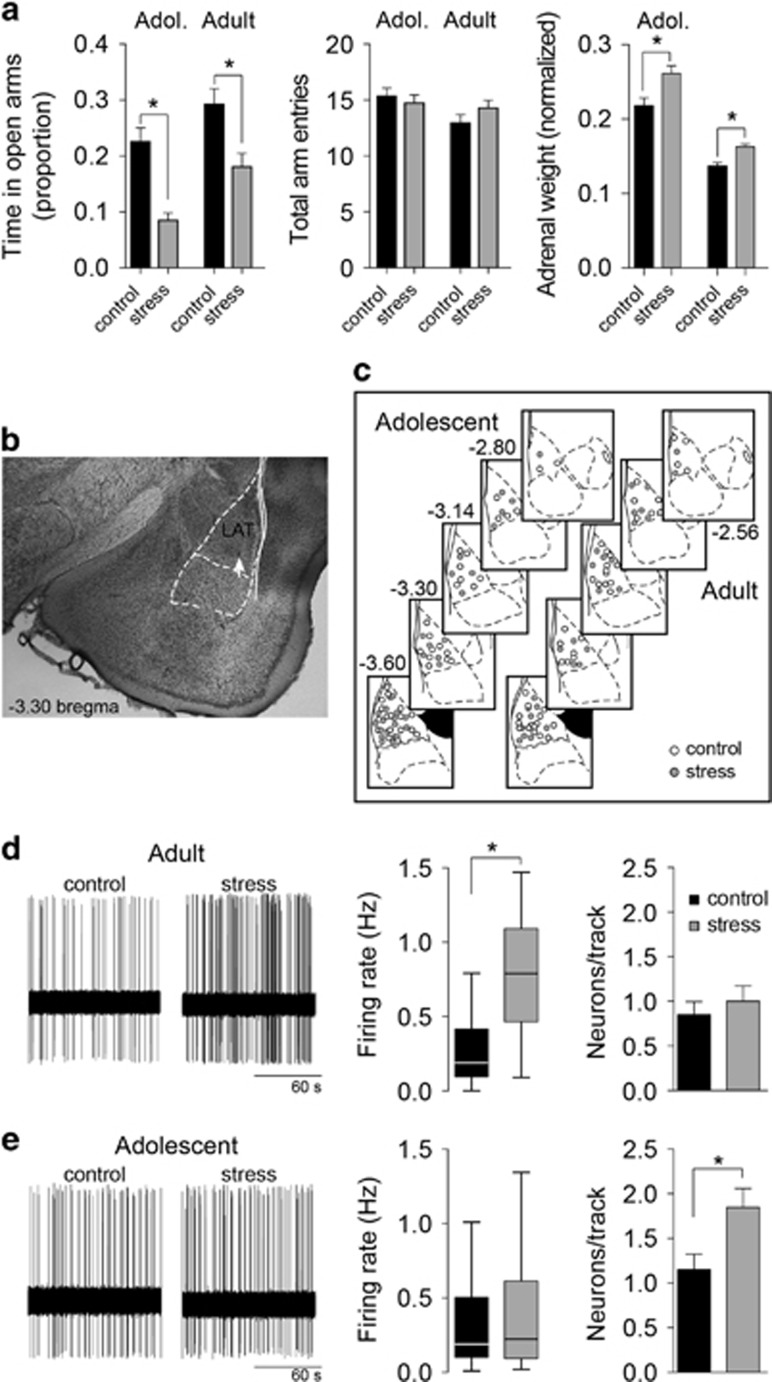Figure 1.
Dissociable effect of repeated stress on the firing of lateral nucleus (LAT) neurons in adults and adolescents. (a) To verify the effectiveness of repeated restraint stress, behavior in the elevated plus maze was measured. Repeated stress significantly decreased the proportion of time in the open arms of the elevated plus maze (EPM) (left) in adolescent and adult rats (*p<0.05, Holm–Sidak's multiple comparisons test after two-way analysis of variance (ANOVA)). There was no significant effect of repeated stress on total arm entries (p>0.05, two-way ANOVA). Repeated stress also increased the weight of adrenal glands (normalized to body weight) in adult and adolescent rats (p<0.05, Holm–Sidak's multiple comparisons test after two-way ANOVA), a secondary measure of the effectiveness of the stressor protocol. (b) Only neurons that were histologically verified to reside within the LAT were included for analysis. Neurons were localized by reconstruction based on location of Pontamine Sky Blue. Shown here is an example of a Pontamine Sky Blue deposit (white arrow) in the LAT. (c) The location of neurons from adolescent (left) and adult rats (right) included for analysis spanned the LAT in control (white circles) and repeated stress conditions (gray circles). (d) The firing rate of LAT neurons was measured from rats exposed to repeated stress or control handling (left). In adult rats, repeated stress significantly increased the firing rate of LAT neurons (box plot±Tukey, *p<0.05, Holm–Sidak's multiple comparisons test after two-way ANOVA), with no effect on the number of firing neurons encountered per electrode penetration track (right, p>0.05, Holm–Sidak's multiple comparisons test after two-way ANOVA). (e) In adolescent rats, repeated stress did not significantly increase the firing rate of LAT neurons (box plot±Tukey, p>0.05, Holm–Sidak's multiple comparisons test after two-way ANOVA), but significantly increased the number of firing neurons encountered per electrode track (right, *p<0.05, Holm–Sidak's multiple comparisons test after significance in two-way ANOVA).

